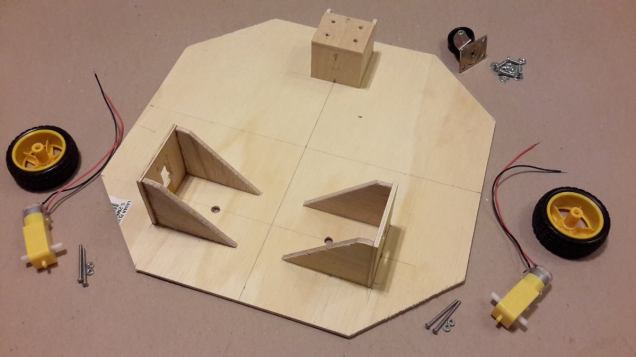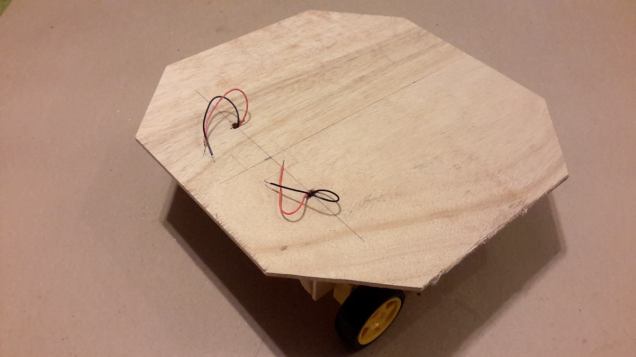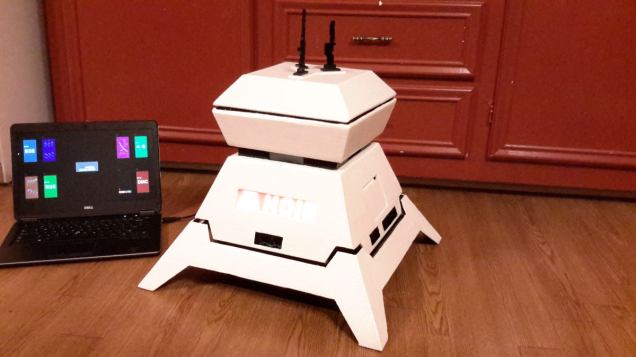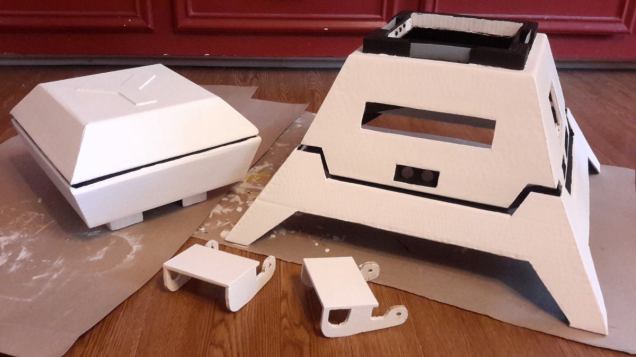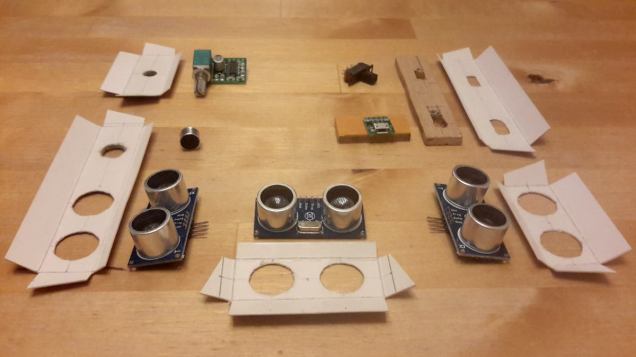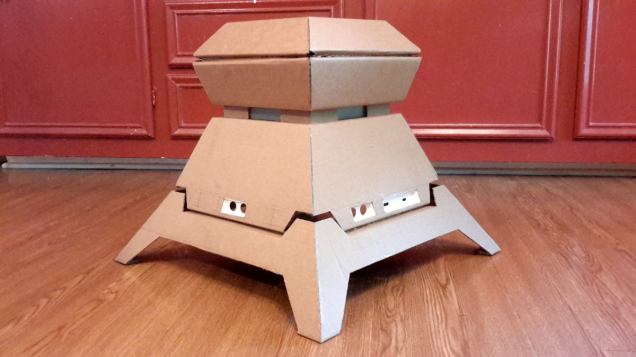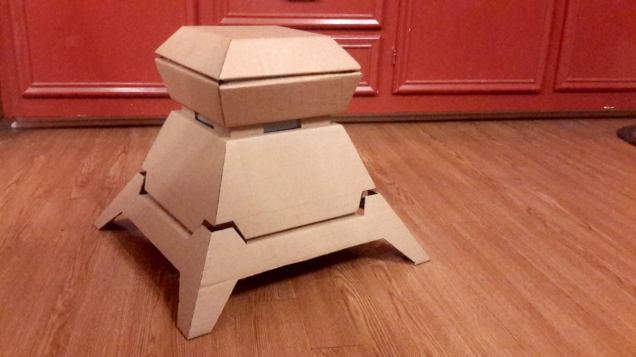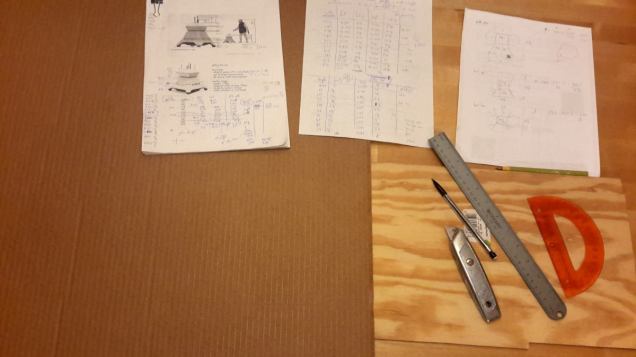Before starting the build, it’s time for some general thoughts:
I really, really love the appearance and the shape of the H015 droid.
However, the original size (the baseplate is 70cm x 70cm) is a little too large for my purposes. I want this droid to go together well with my astromech droid R3-B9 (built at approx. half of R2-D2’s size) and my mousedroid MSE-6c (built at 90% of the size of the original). So, I decided to build this one at 70%, making the baseplate 49cm x 49cm, and the height 41cm.
Like the original mousedroid (which moves and makes sounds, but has no other effects), the H015 droid is also rather limited in its functions. In the movie it moves and it can have a blue or red light on the front side. For my robots, I want them to be a little more fun than that, so I aim for a few additional functions. My MSE-6c got an ultrasonic distance sensor (which helps him to brake in front of obstacles), and 4x 7-segment display (which displays the distance to the closest object), and a blue and red LED row on the front side.
I am planning to add similar features to the H015 droid. So, this won’t be an exact replica, neither in size, nor in the details. And like my other droids, I am also planning to build this one from cardboard. With this in mind, I have created the following plans. These plans are not exactly up to scale. So, one can not simply enlarge these, but has to redraw everything on the cardboard. A great source of free large sheets of robust corrugated cardboard is Sam’s Club (they use this to separate layers of kitchen towels or toilet paper).
The head and the rest of the body are each made out of two pieces. These two pieces are both glued to a connecting ring which is made out of one layer of cardboard for the headpieces, and two layers of cardboard for the body pieces.
Here are the plans for the two head pieces, and for the connecting rings,
… and for the upper and lower parts of the body.
Later, I will insert a piece of wood inside the body, to mount the motors and caster wheel(s).

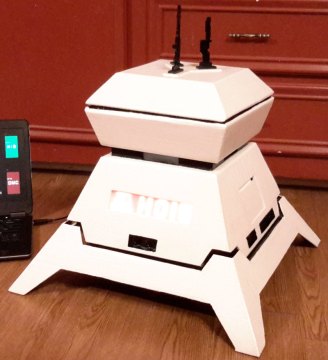








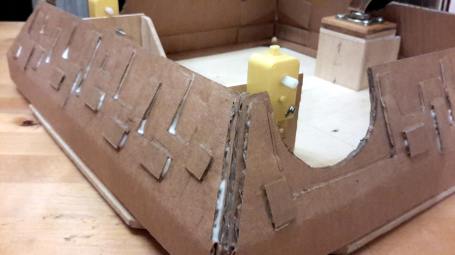
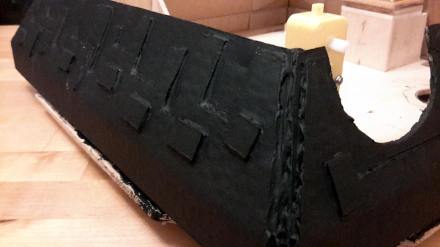

 Since our H015 will be significantly lighter than R3-B9, they should work particularly well.
Since our H015 will be significantly lighter than R3-B9, they should work particularly well.
